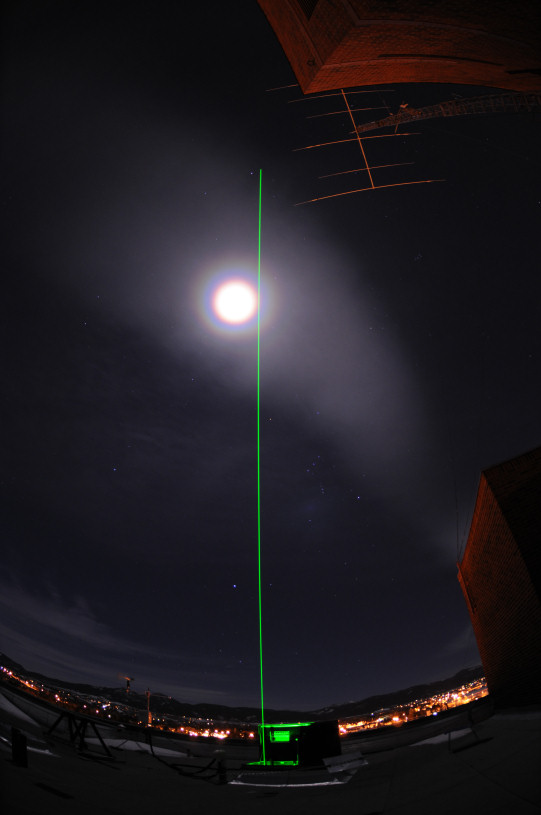Coronae and Iridescence
Coronae are colored rings that often form around the Sun or Moon (or other light source) when light is diffracted by tiny cloud particles. The angle into which light is diffracted is proportional to the wavelength and inversely proportional to the dimension of the scattering object. Therefore, the best coronae appear in clouds that have tiny particles with relatively uniform size distributions. Coronae are most often the result of diffraction by tiny liquid water droplets in clouds. However, under certain conditions some clouds can contain a narrow distribution of unusually tiny ice crystals. This happens, for example, in wave clouds.
5 February 2009
A nice lunar corona formed in a thin wave cloud. The photograph below shows the corona alongside my green laser beam that emanates from a dual-polarization lidar instrument that we built at MSU. This lidar showed that the wave cloud in this case contained tiny ice particles that created the corona.
Publications
My publications on wave-cloud coronae and iridescence:
- Coronas and Iridescent Clouds, Optics & Photonics News 13(10), 30-35 (2002) ... popular-level discussion
- Coronas and Iridescence in Mountain Wave Clouds, Applied Optics 42(3), 476-485 (2003) ... optics-oriented research paper
- Coronas and Iridescence in Mountain Wave Clouds over Northeastern Colorado, Bulletin of the American Meteorological Society 84(10), 1373-1386 (2003) ... meteorology-oriented overview
All images copyright Joseph A. Shaw ... use only with permission.
Dr. Joseph A. Shaw - Montana State University - Bozeman, Montana

